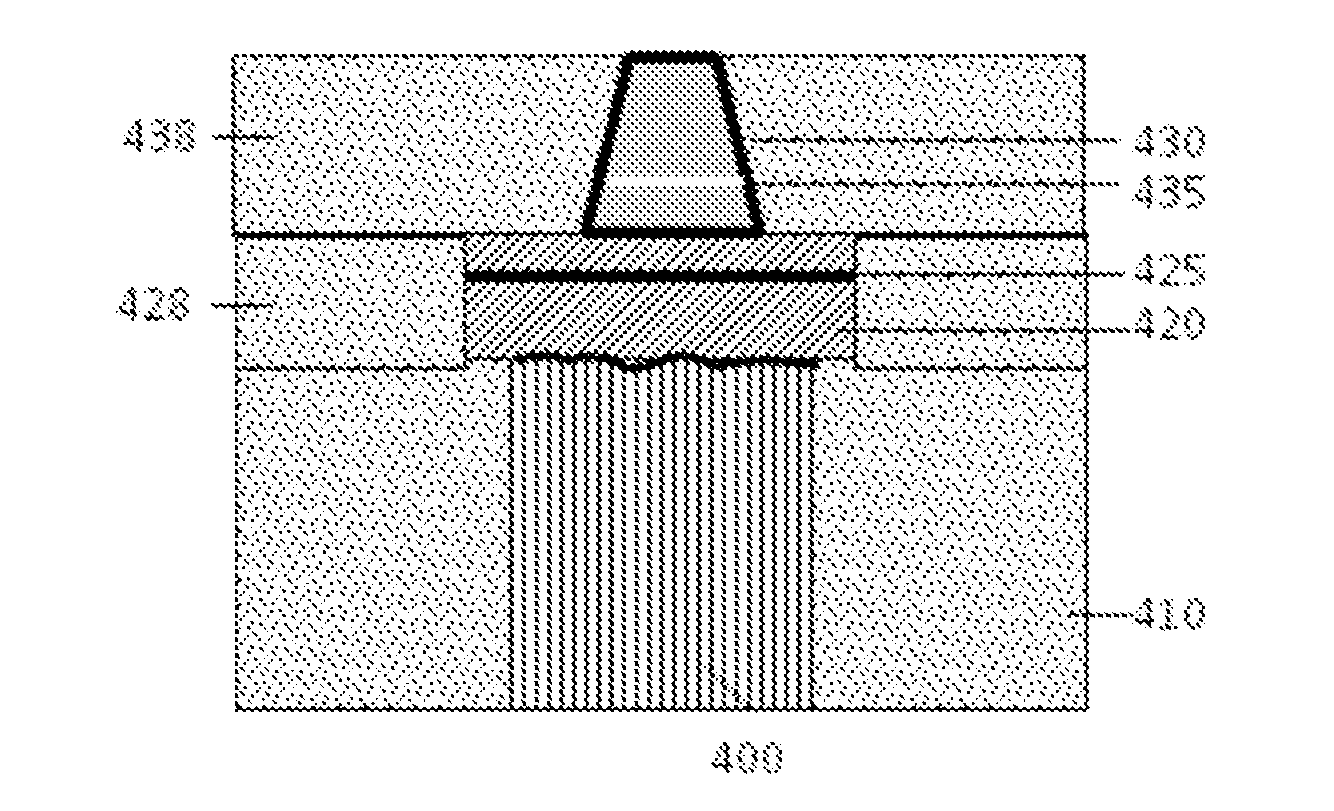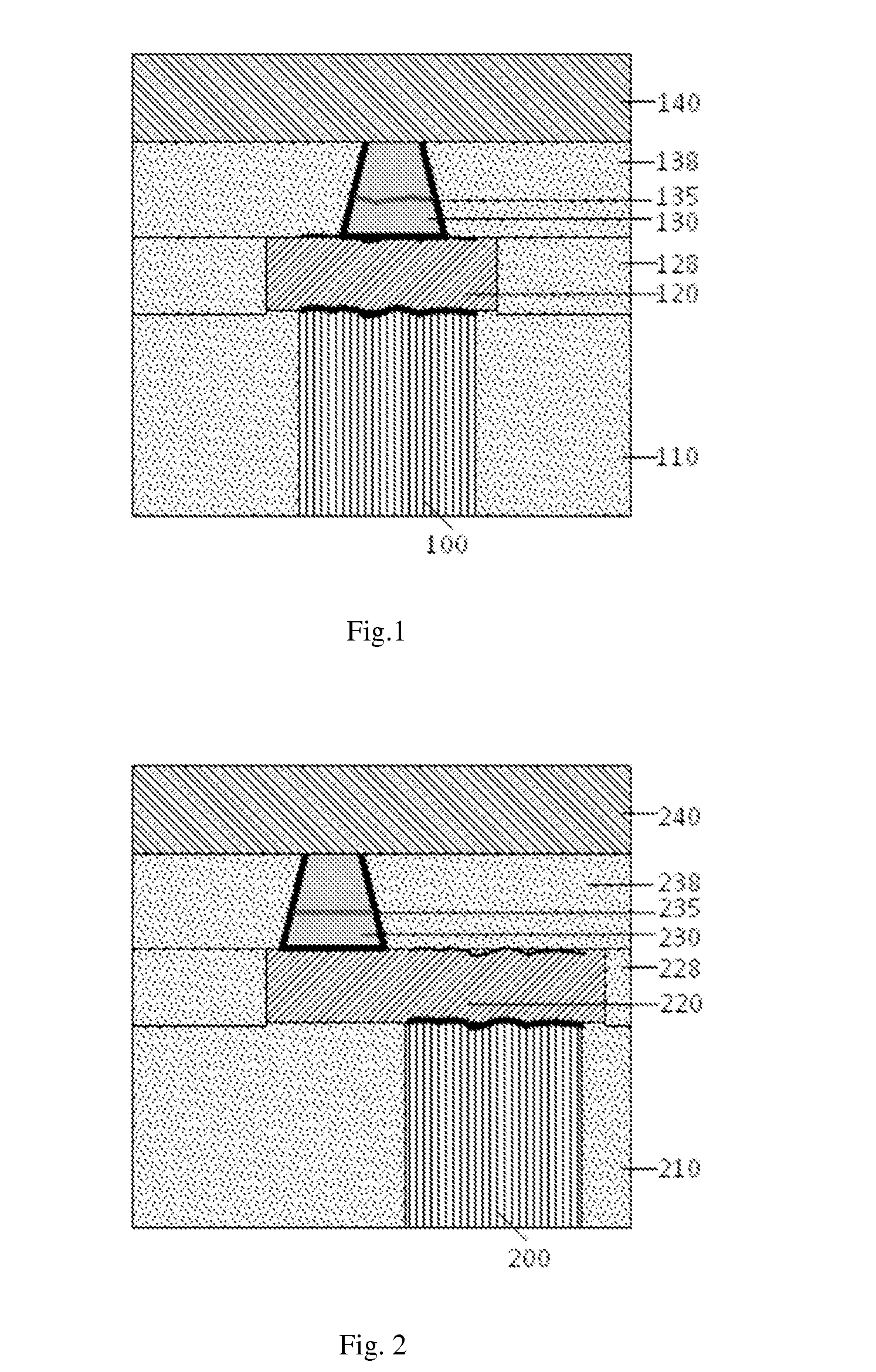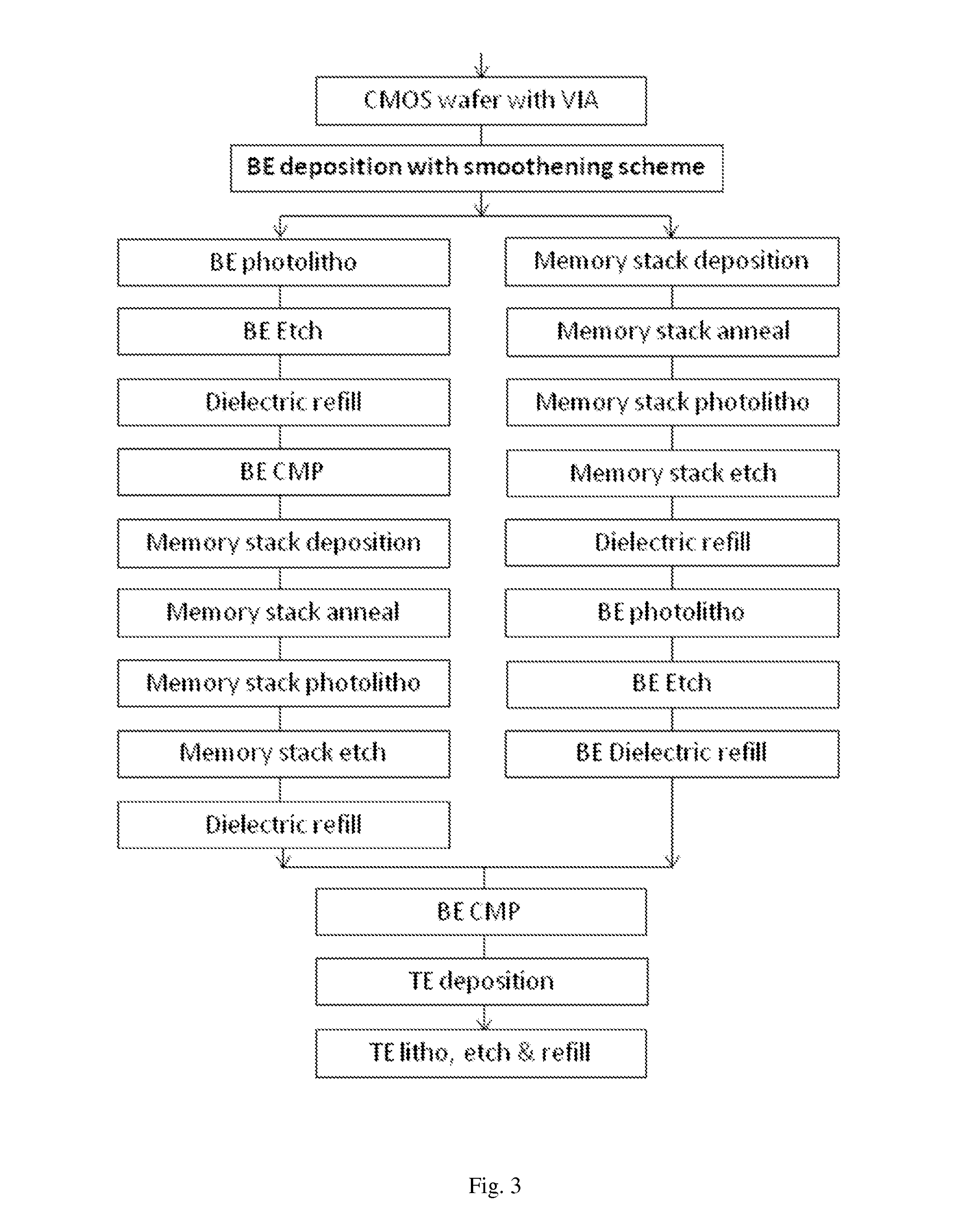Method for makinga magnetic random access memory element with small dimension and high qulity
a random access memory and element technology, applied in the manufacture/treatment of galvano-magnetic devices, electrical apparatus, magnetic field-controlled resistors, etc., can solve the problems of increased information readout errors, decreased value changes, and still broken tunnel barriers, so as to improve device performance and magnetic stability, the effect of being more clean
- Summary
- Abstract
- Description
- Claims
- Application Information
AI Technical Summary
Benefits of technology
Problems solved by technology
Method used
Image
Examples
embodiment one
[0032]Following from the above BE deposition process, MTJ film deposition is continued without vacuum break. The deposition of MTJ film stack begins with seed layer, magnetic reference layer, magnetic tunneling oxide barrier layer, memory recording layer, capping layer and finally a hard mask layer. For pSTT-MRAM, the magnetic reference layer which is made of TbCoFe, CoX, or superlattice of [Co / X]n with X being Pt, Pd or Ni and n ranges from 5 to 20, has its uni-axial magnetic anisotropy in a direction perpendicular to a film surfaces with large coercivity (invariable). To further enhance its magnetic polarization invariability, the magnetic reference layer can be made as Y / Ru / CoFe, Y / Ru / CoFe / CoFeB with Y being TbCoFe or CoX and Ru with a thickness at its second (7-9 A) or first (3-4.5 A) oscillation peak. For in-plane STT-MRAM, the magnetic reference layer has tri-layer structure, either MnZ / Ru / CoFe or MnZ / Ru / CoFe / CoFeB with Z being either Pt, Pd or Ir. The tunnel oxide barrier lay...
embodiment two
[0036]After the BE deposition and surface smoothening processes described in [0011], a complete BE is formed on CMOS VIAs (FIG. 5A). A photolithography patterning and etch are used to form an isolated BE. Then dielectric (SiO2 or SiN) refill (428) is used to cover the etched areas and an optional CMP is used to flatten the BE surface (FIG. 5B).
[0037]The wafer is moved in high vacuum physical deposition (PVD) chamber. The BE surface is sputtering cleaned, and then MTJ film stack is deposited on the patterned BE. The deposition of MTJ film stack (430) begin with seed layer, magnetic reference layer, magnetic tunneling oxide barrier layer (435), memory recording layer, capping layer and finally a hard mask layer. For pSTT-MRAM, the magnetic reference layer which is made of TbCoFe, CoX, CoX, CoX, or superlattice of [Co / X]n with X being Pt, Pd or Ni and n ranges from 5 to 30, has its uni-axial magnetic anisotropy in a direction perpendicular to a film surfaces with large coercivity (inva...
PUM
 Login to View More
Login to View More Abstract
Description
Claims
Application Information
 Login to View More
Login to View More - R&D
- Intellectual Property
- Life Sciences
- Materials
- Tech Scout
- Unparalleled Data Quality
- Higher Quality Content
- 60% Fewer Hallucinations
Browse by: Latest US Patents, China's latest patents, Technical Efficacy Thesaurus, Application Domain, Technology Topic, Popular Technical Reports.
© 2025 PatSnap. All rights reserved.Legal|Privacy policy|Modern Slavery Act Transparency Statement|Sitemap|About US| Contact US: help@patsnap.com



